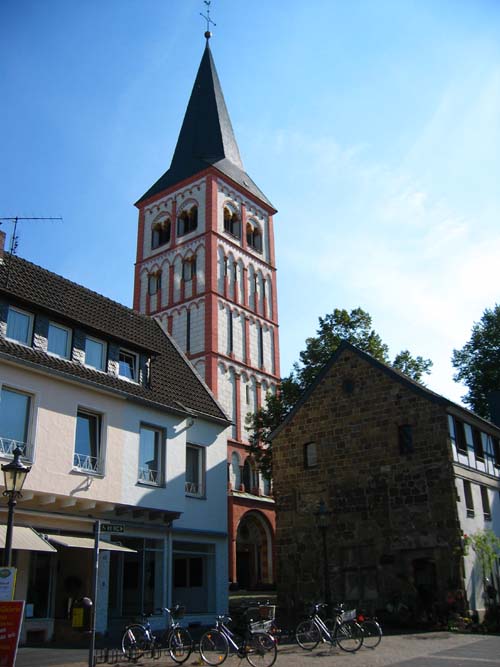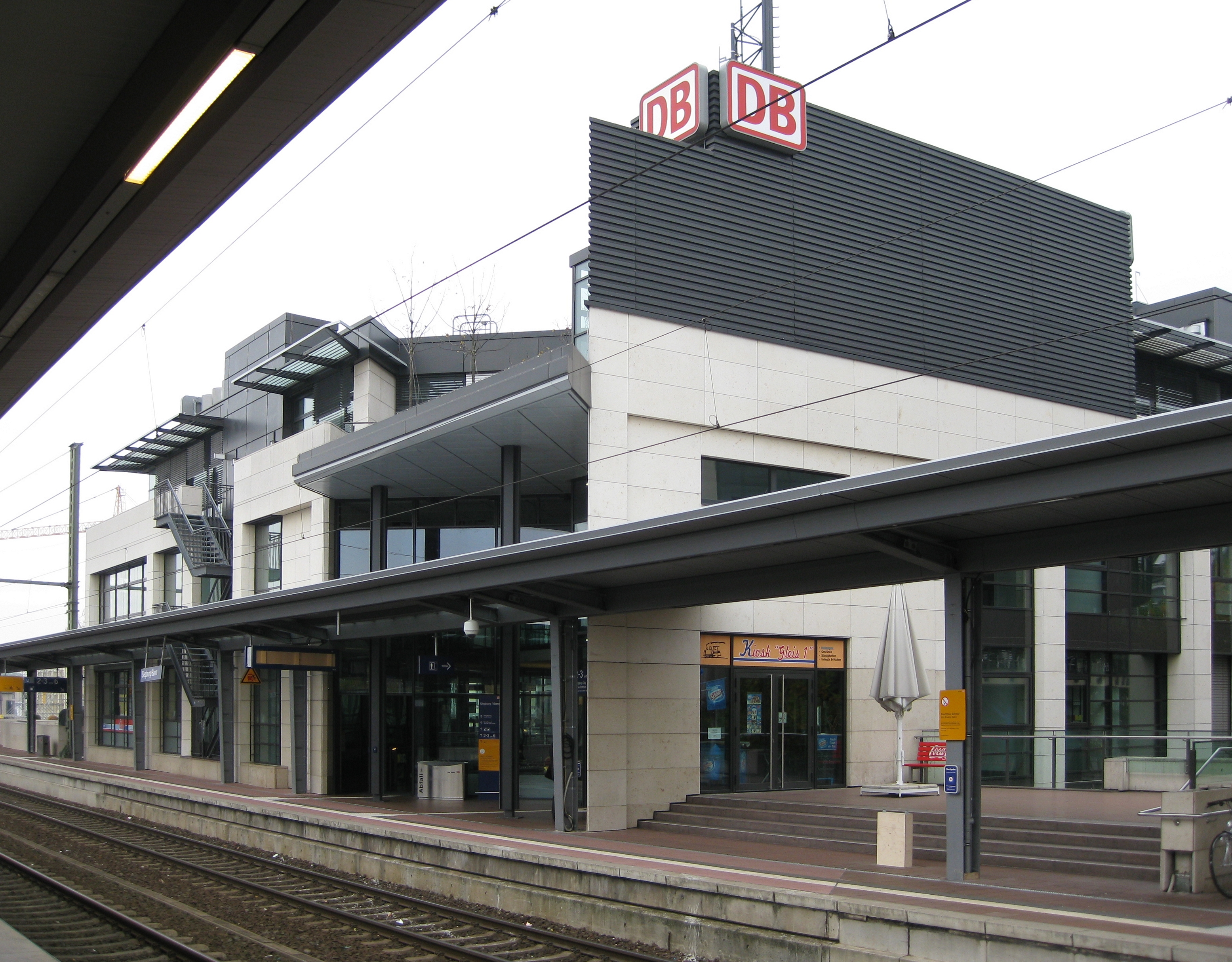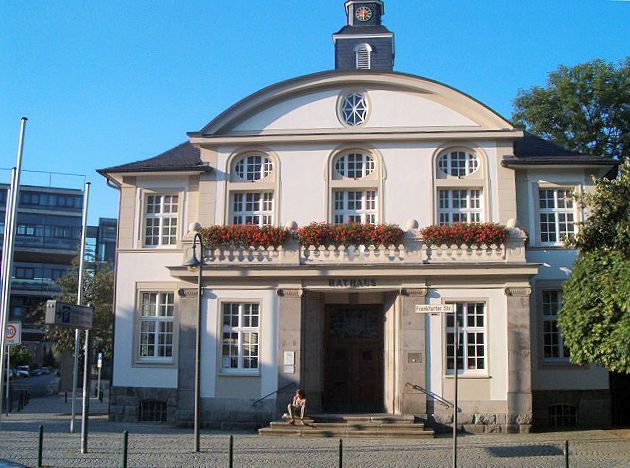|
Siegburg
Siegburg (i.e. ''fort on the Sieg river''; Ripuarian: ''Sieburch'') is a city in the district of Rhein-Sieg-Kreis in North Rhine-Westphalia, Germany. It is located on the banks of the rivers Sieg and Agger, 10 kilometres from the former seat of West German government Bonn and 26 kilometres from Cologne. The population of the city was 39,192 in the 2013 census. Geography Siegburg is located approximately 8 kilometres east of the river Rhine, at the confluence where the Agger joins the Sieg, in the southeast corner of the Cologne Lowland. Neighbouring towns include Troisdorf, Lohmar, Sankt Augustin and Hennef. The nearby cities of Cologne and Bonn are easily accessible through good transport links. The highest point of the urban area is 220m above sea level ( NHN) in the Braschoß area and the lowest point is just under 54m above sea level at the mouth of the Agger. History Archbishop-Elector Anno II of Cologne founded a Benedictine monastery in 1064, known as Michaelsberg ... [...More Info...] [...Related Items...] OR: [Wikipedia] [Google] [Baidu] |
Siegburg/Bonn Station
Siegburg/Bonn station, in the town of Siegburg, North Rhine-Westphalia, Germany, is on the Cologne–Frankfurt high-speed rail line and the Sieg Railway. It was rebuilt for the high-speed line and is connected to Bonn by the Siegburg line of the Bonn Stadtbahn. It is in the network area of the Verkehrsverbund Rhein-Sieg (Rhine-Sieg Transport Association). History The original Siegburg station opened in 1859 on the Sieg Railway (german: Siegstrecke). In 1870, Siegburg became the northern end of the East Rhine Railway (''Rechte Rheinstrecke''), with the intention that it would be later extended through the Agger valley through the Ruhr to Bochum or Essen, so that Siegburg would become a significant railway junction. Influential people in Cologne finally prevailed, so instead the East Rhine Railway was extended from Friedrich-Wilhelms-Hütte to Troisdorf in order to connect to Cologne, resulting in the line to Siegburg becoming only a branch line parallel with the Sieg Railway. ... [...More Info...] [...Related Items...] OR: [Wikipedia] [Google] [Baidu] |
Michaelsberg Abbey, Siegburg
Michaelsberg Abbey (german: Abtei Michaelsberg) is a former monastery of the Benedictine Order, belonging to the Subiaco Congregation (1064-2011). The monastery is situated on the ''Michaelsberg'' ("St. Michael's Mount"), about 40 metres above the town of Siegburg. For this reason it is also often known as Siegburg Abbey. History Foundation The hill called the Michaelsberg, formerly known as the ''Siegberg'', was first inhabited about 800 by the Counts of Auelgau, who built a castle there. In 1064 the Archbishop of Cologne, Anno II of Cologne, founded a monastery there, dedicated to the Archangel Michael, from whom both the mountain and the abbey henceforward took their names. He appointed the monk Erpho (died 1076) as the first abbot. Anno himself died at the abbey in 1075 and was buried there. Archbishop Anno was canonized in the abbey church on 29 April 1183 by Cardinal Giovanni Conti da Anagni and Bishop Pietro of Luni, acting as papal legates of Pope Lucius III. At ... [...More Info...] [...Related Items...] OR: [Wikipedia] [Google] [Baidu] |
Archbishop Anno II
Anno II ( – 4 December 1075) was Archbishop of Cologne from 1056 until his death. From 1063 to 1065 he acted as regent of the Holy Roman Empire for the minor Emperor Henry IV. Anno is venerated as a saint of the Catholic Church. Life He was born to the ''edelfrei'' Steusslingen family at Altsteußlingen (near Ehingen) in Swabia, and was educated in Bamberg, where he subsequently became head of the cathedral school. In 1046 he became chaplain to the Salian emperor Henry III, and accompanied him on his campaigns against King Andrew I of Hungary in 1051 and 1052. The emperor appointed him provost at the newly erected Cathedral of Goslar in 1054 and Archbishop of Cologne two years later. Due to his dominant position at the imperial court, Anno was able to influence other appointments. Anno's nephew, Burchard, was made Bishop of Halberstadt in 1059, and in 1063, his brother, Werner, became Archbishop of Magdeburg. According to contemporary sources, Anno led an ascetic li ... [...More Info...] [...Related Items...] OR: [Wikipedia] [Google] [Baidu] |
Rhein-Sieg-Kreis
The Rhein-Sieg-Kreis ( ksh, Rhein-Siech-Kreis) is a ''Kreis'' (district) in the south of North Rhine-Westphalia, Germany. Neighboring districts are Rheinisch-Bergischer Kreis, Oberbergischer Kreis, Altenkirchen, Neuwied, Ahrweiler, Euskirchen, Rhein-Erft-Kreis, the urban district of Cologne. The federal city of Bonn is nearly completely surrounded by the district. History The district as known today was created in 1969, during the reorganization of the districts in North Rhine-Westphalia, by merging Sieg District with the District of Bonn (from which Bonn itself was separated in 1887 to become an urban district). Sieg District was created in 1825. Geography Geographically Rhein-Sieg District covers the valley of the river Sieg and also, since the merger with the District of Bonn, that of the Rhine around Bonn, as well an area in the most easterly part of the Eifel. Politics Municipal elections are held every five years, in which the district administrator () and district c ... [...More Info...] [...Related Items...] OR: [Wikipedia] [Google] [Baidu] |
Bonn
The federal city of Bonn ( lat, Bonna) is a city on the banks of the Rhine in the German state of North Rhine-Westphalia, with a population of over 300,000. About south-southeast of Cologne, Bonn is in the southernmost part of the Rhine-Ruhr region, Germany's largest metropolitan area, with over 11 million inhabitants. It is a university city and the birthplace of Ludwig van Beethoven. Founded in the 1st century BC as a Roman settlement in the province Germania Inferior, Bonn is one of Germany's oldest cities. It was the capital city of the Electorate of Cologne from 1597 to 1794, and residence of the Archbishops and Prince-electors of Cologne. From 1949 to 1990, Bonn was the capital of West Germany, and Germany's present constitution, the Basic Law, was declared in the city in 1949. The era when Bonn served as the capital of West Germany is referred to by historians as the Bonn Republic. From 1990 to 1999, Bonn served as the seat of government – but no longer capital – ... [...More Info...] [...Related Items...] OR: [Wikipedia] [Google] [Baidu] |
Hennef (Sieg)
Hennef (Sieg) () is a town in the Rhein-Sieg district of North Rhine-Westphalia, Germany. It is situated on the river Sieg, approx. south-east of Siegburg and east of Bonn. Hennef is the fourth-biggest town in the Rhein-Sieg-Kreis (i.e. district). It is the site of the 15th-century castle, Schloss Allner, next to the Allner See. Within Hennef is the town of Stadt Blankenberg, with the castle of Blankenberg. Hennef is also known as the "City of 100 villages". Twin towns – sister cities Hennef is twinned with: * Banbury, England, United Kingdom (1981) * Le Pecq, France (1997) * Nowy Dwór Gdański, Poland (2001) Trivia * The first calibratable automatic weighing scales in the world were invented by Carl Reuther in Hennef * Hennef's current district of Geistingen was first mentioned in a document from 885. Hennef itself was first mentioned in 1075 as "Hannafo" * The national football team sometimes trains here; at the FIFA Confederations Cup in 2005 the Argentina national ... [...More Info...] [...Related Items...] OR: [Wikipedia] [Google] [Baidu] |
North Rhine-Westphalia
North Rhine-Westphalia (german: Nordrhein-Westfalen, ; li, Noordrien-Wesfale ; nds, Noordrhien-Westfalen; ksh, Noodrhing-Wäßßfaale), commonly shortened to NRW (), is a States of Germany, state (''Land'') in Western Germany. With more than 18 million inhabitants, it is the List of German states by population, most populous state of Germany. Apart from the city-states, it is also the List of German states by population density, most densely populated state in Germany. Covering an area of , it is the List of German states by area, fourth-largest German state by size. North Rhine-Westphalia features 30 of the 81 German municipalities with over 100,000 inhabitants, including Cologne (over 1 million), the state capital Düsseldorf, Dortmund and Essen (all about 600,000 inhabitants) and other cities predominantly located in the Rhine-Ruhr metropolitan area, the largest urban area in Germany and the fourth-largest on the European continent. The location of the Rhine-Ruhr at the h ... [...More Info...] [...Related Items...] OR: [Wikipedia] [Google] [Baidu] |
Agger River
The Agger is a river in Germany, a right tributary of the Sieg in North Rhine-Westphalia. It is long. Its source is in the Sauerland hills, near Meinerzhagen. It winds through the towns Engelskirchen, Overath and Lohmar. Near Siegburg the Agger flows into the Sieg. Tributaries The following rivers are tributaries to the river Agger (from source to mouth): *Left: Rengse, Dörspe, Steinagger, Halstenbach, Wiehl, Kaltenbach, Loopebach, Schlingenbach, Lombach, Hohner Bach, Naafbach, Jabach, Auelsbach, Rothenbach *Right: Genkel, Seßmarbach, Rospebach, Strombach, Loper Bach, Walbach, Leppe, Oberscheider Bach, Sülz See also * List of rivers of North Rhine-Westphalia A list of rivers of North Rhine-Westphalia, Germany: A * Aa, left tributary of the Möhne * Aa, left tributary of the Nethe * Aa, left tributary of the Werre * Aabach, tributary of the Afte * Aabach, small river in the Ems river system * Abbabac ... References Rivers of North Rhine-Westphalia Rivers ... [...More Info...] [...Related Items...] OR: [Wikipedia] [Google] [Baidu] |
Cologne
Cologne ( ; german: Köln ; ksh, Kölle ) is the largest city of the German western States of Germany, state of North Rhine-Westphalia (NRW) and the List of cities in Germany by population, fourth-most populous city of Germany with 1.1 million inhabitants in the city proper and 3.6 million people in the Cologne Bonn Region, urban region. Centered on the left bank of the Rhine, left (west) bank of the Rhine, Cologne is about southeast of NRW's state capital Düsseldorf and northwest of Bonn, the former capital of West Germany. The city's medieval Catholic Cologne Cathedral (), the third-tallest church and tallest cathedral in the world, constructed to house the Shrine of the Three Kings, is a globally recognized landmark and one of the most visited sights and pilgrimage destinations in Europe. The cityscape is further shaped by the Twelve Romanesque churches of Cologne, and Cologne is famous for Eau de Cologne, that has been produced in the city since 1709, and "col ... [...More Info...] [...Related Items...] OR: [Wikipedia] [Google] [Baidu] |
Agger (river)
The Agger is a river in Germany, a right tributary of the Sieg in North Rhine-Westphalia. It is long. Its source is in the Sauerland hills, near Meinerzhagen. It winds through the towns Engelskirchen, Overath and Lohmar. Near Siegburg the Agger flows into the Sieg. Tributaries The following rivers are tributaries to the river Agger (from source to mouth): *Left: Rengse, Dörspe, Steinagger, Halstenbach, Wiehl, Kaltenbach, Loopebach, Schlingenbach, Lombach, Hohner Bach, Naafbach, Jabach, Auelsbach, Rothenbach *Right: Genkel, Seßmarbach, Rospebach, Strombach, Loper Bach, Walbach, Leppe, Oberscheider Bach, Sülz See also * List of rivers of North Rhine-Westphalia A list of rivers of North Rhine-Westphalia, Germany: A * Aa, left tributary of the Möhne * Aa, left tributary of the Nethe * Aa, left tributary of the Werre * Aabach, tributary of the Afte * Aabach, small river in the Ems river system * Abbabac ... References Rivers of North Rhine-Westphalia ... [...More Info...] [...Related Items...] OR: [Wikipedia] [Google] [Baidu] |
Sieg
The Sieg is a river in North Rhine-Westphalia and Rhineland-Palatinate, Germany. It is a right tributary of the Rhine. The river is named after the Sicambri. It is in length. The source is located in the Rothaargebirge mountains. From here the river runs southwestwards to the city of Siegen and the hills of Siegerland, both named after the river. Further west the Sieg valley forms the boundary of the Bergisches Land (northern) and Westerwald (southern). The river finally runs through a protected area east of the city of Bonn. After passing the cities of Hennef and Siegburg, the river flows into the Rhine at the ''Naturschutzgebiet Siegaue'', a protected area immediately to the northeast of the city of Bonn, near Niederkassel/. Sieg Spring The Sieg Spring (german: Siegquelle), the source of the Sieg, is at an elevation of , near the village of , North Rhine-Westphalia. The location was restored in 2013. Tributaries The main tributaries of the Sieg are, from source to mo ... [...More Info...] [...Related Items...] OR: [Wikipedia] [Google] [Baidu] |
Sankt Augustin
Sankt Augustin ( Ripuarian: ''Sank Aujustin'') is a town in the Rhein-Sieg district, in North Rhine-Westphalia, Germany. It is named after the patron saint of the Divine Word Missionaries, Saint Augustine of Hippo (354-430). The Missionaries established a monastery near the current town centre in 1913. The municipality of Sankt Augustin was established in 1969, and on September 6, 1977 Sankt Augustin acquired town privileges (German: ''Stadtrechte''). Sankt Augustin is situated about eight km north-east of Bonn and three km south-west of Siegburg. Mayors *1969–1984: Karl Gatzweiler ( CDU) *1989–1994: Wilfried Wessel (CDU) *1994–1995: Anke Riefers (SPD) *1995: Hans Jaax (SPD) (temporary) *1995–1999: Anke Riefers (SPD) *1999–2020: Klaus Schumacher (CDU) *Since 2020: Max Leitterstorf (CDU) Twin towns – sister cities Sankt Augustin is twinned with: * Grantham, England, United Kingdom * Mevaseret Zion, Israel * Szentes, Hungary Government organizations * West Reg ... [...More Info...] [...Related Items...] OR: [Wikipedia] [Google] [Baidu] |



.jpg)

